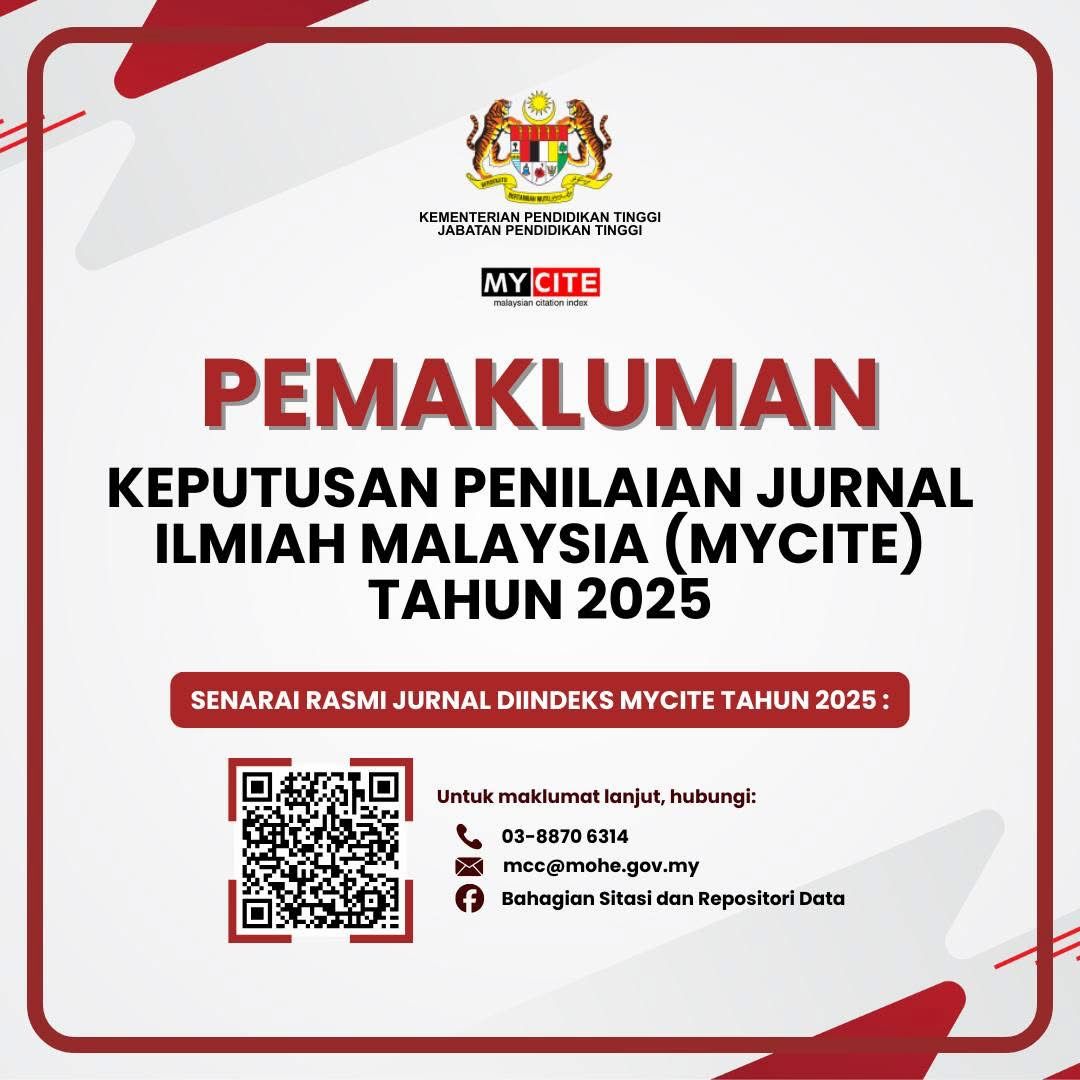Determining Suitable Emoji Designs for Awareness Posters Among Teenagers
DOI:
https://doi.org/10.24191/idealogy.v10i2.797Abstract
Emojis are small digital graphics or icons used as visual representations of emotions, ideas, or concepts in electronic communication. Originating from Japanese mobile technology in the late 1990s, emojis have evolved into a globally recognized visual language that enhances textual communication by conveying tone, emotional context, and non-verbal cues. In the context of awareness poster design, emojis function as effective tools to attract attention, engage viewers, and reinforce the intended message. Therefore, this study aims to identify appropriate emoji designs that can persuade users and sustain their interest in reading the content of an awareness poster. A quantitative research methodology is employed, whereby questionnaires are distributed to respondents to collect feedback. Six emoji designs, featuring various styles such as colored line, vector, line and shadow, 3D, and realistic formats, were selected for evaluation. To determine which designs resonated most effectively on an emotional level, these emojis were tested with 32 primarily university students, who provided valuable
insights into the visuals that elicited the most positive reactions
Keywords: Emoji, Poster, Awareness, Teenager
References
Cramer, H., de Juan, P., & Tetreault, J. (2016). Sender-intended functions of emojis in US messaging.
Proceedings of the 18th International Conference on Human-Computer Interaction with Mobile
Devices and Services, 504–509.
Derks, D., Fischer, A. H., & Bos, A. E. R. (2008). The role of emotion in computer-mediated
communication: A review. Computers in Human Behavior, 24(3), 766–785.
https://doi.org/10.1016/j.chb.2007.04.004.
Ekman, P., & Friesen, W. V. (1975). Unmasking the face: A guide to recognizing emotions from facial
clues. Prentice Hall.
Holliday, R., Bailey, R., & Thomas, G. (2020). Effective visual design in health
communication: A review of evidence and practice. Health Communication Research Journal,35(2),
112–130.
Kahraman, C., Cevi, S., Ates, N. Y., & Gulbay, M. (2007). Fuzzy multi-crieria evaluation of
industrial robotic systems. Computer & Industrial Engineering, 52, 414-433 (2007). doi:
10.1016/j.cie.2007.01.005.
Kaye, L. K., Wall, H. J., & Malone, S. A. (2016). Exploring emoji usage and its influence on
communication. Computers in Human Behavior, 63, 213-223.
Kaye, L. K., Wall, H. J., & Malone, S. A. (2016). “Turn that frown upside-down”: A contextual account
of emoticon usage on different virtual platforms. Computers in Human Behavior, 58, 431–441.
https://doi.org/10.1016/j.chb.2015.12.047
Krumhuber, E. G., Manstead, A. S. R., Cosker, D., Marshall, D., Rosin, P. L., & Kappas, A. (2007).
Facial dynamics as indicators of trustworthiness and cooperative behavior. Emotion, 7(4), 730–
735. https://doi.org/10.1037/1528-3542.7.4.730
McDougall, S. J., Zehnder, S. M., & Cumming, J. L. (2006). Emotional expression in virtual
environments: Empirical findings and implications. Journal of Virtual Reality and Broadcasting,
3(3).
Nobata, C. (2015). Emoji sense: A semantic approach to understanding emojis in social media.
Proceedings of the 2015 Conference on Empirical Methods in Natural Language Processing, 1–
10.
Novak, P. K., Smailović, J., Sluban, B., & Mozetič, I. (2015). Sentiment of Emojis. PloS one,
10(12), e0144296.
Novak, P. K. (2015). Sentiment analysis of emojis and their use in communication. Journal of Online
Behavior, 7(3), 255-263.
Sharma, R., & Soni, R. (2020). Emoji as a tool of communication in digital media: A review of
literature. Journal of Communication and Media, 15(2), 101-110.
Sharma, A., & Soni, S. (2020). A study on the impact of emojis in social media marketing. International
Journal of Marketing Studies, 12(3), 45–53.
Downloads
Published
Issue
Section
License
Copyright (c) 2025 UiTM Press

This work is licensed under a Creative Commons Attribution-NonCommercial-NoDerivatives 4.0 International License.
UiTM Press (the Publisher) has agreed to publish the undersigned author’s paper in Idealogy Journal. The agreement is contingent upon the fulfilment of a number of requirements listed below.
1. The undersigned author warrants that the paper entitled below is original, that it is not in any way libellous or unlawful in Malaysia, that it does not infringe any copyright or other proprietary right. The undersigned hereby represents and warrants that he/she is the author of the paper, except for material that is clearly identified as to its original source, with permission notices from the copyright owners where required. The undersigned represents that he/she has the power and authority to sign and execute this agreement.
2. The undersigned author warrants that the paper entitled below has not been published elsewhere, and also it will not be submitted anywhere else for publication prior to acceptance/rejection by this Journal.
3. By submitting the paper entitled below, the undersigned author agrees to transfer the rights to publish and distribute the paper in an international e-journal (entitled above) to Publisher.
4. The undersigned author agrees to make a reasonable effort to conform to Publisher's submission guidelines and to liaise with the editor to ensure that the requirements of these guidelines are met to a reasonable degree.
5. The corresponding author signs for and accepts responsibility for releasing this material on behalf of any and all coauthors. This agreement is to be signed by at least one of the authors who has obtained the assent of the co-author(s) where applicable. After submission of this agreement signed by the corresponding author, changes of authorship or in the order of the authors listed will not be accepted.



